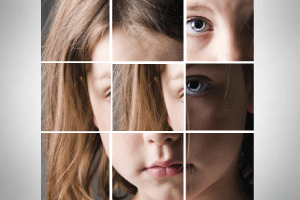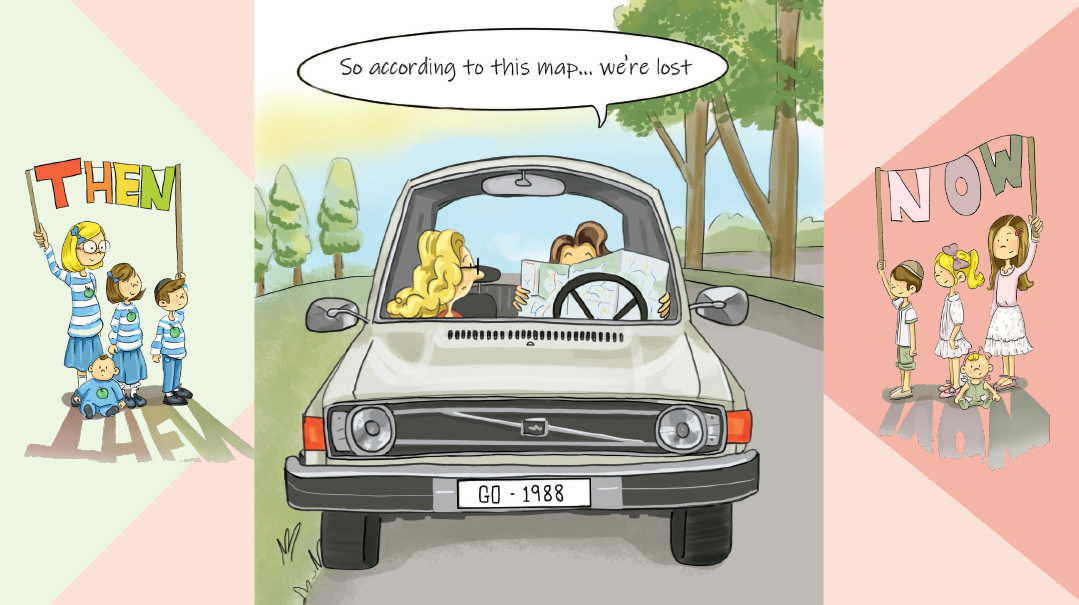Come Inside My World

Autism affects some 2 million people in the United States and tens of millions worldwide. In the past their world was impenetrable to outsiders.
 Mommy is looking. Why is Mommy looking? I like it when Mommy pours milk. In a cup. The sippy cup. Sippy is a good girl. Sippy doesn’t spill. Sippy is Malki’s cup. Malki’s cup. Malki’s cup. Malki’s cup.
Mommy is looking. Why is Mommy looking? I like it when Mommy pours milk. In a cup. The sippy cup. Sippy is a good girl. Sippy doesn’t spill. Sippy is Malki’s cup. Malki’s cup. Malki’s cup. Malki’s cup.
Where’s Malki’s cup? Why doesn’t Mommy get Malki’s cup? I said to Mommy I want a drink. I said it. “Malki do you want milk?” Mommy asked and I said “Malki do you want milk?” I said it.
Oh no! Why is Mommy putting the milk in the frige? I’m thirsty! Why won’t Mommy get Sippy? Why won’t Mommy give me a drink? I said it! Why doesn’t Mommy hear me? I said it! I said it!
MALKI DO YOU WANT MILK! MALKI DO YOU WANT MILK! MALKI DO YOU WANT MILK!
Malki is not a real child but she could be. And as a child with autism she would have plenty of company. Not so long ago researchers were saying that one out of every hundred children in the United States has some sort of autism spectrum disorder ranging from having an intellectual disability (IQ below 70) to having above-average intellectual capabilities. Today the statistic is one out of 88 children with boys being three to four times more likely to be diagnosed with autism than girls. Health officials expect the rate of prevalence to continue to increase.
What causes autism? The medical community still doesn’t know for sure mainly because autism isn’t one single disorder. It’s a group of related disorders with many different causes; each child is his or her own unique world. Researchers have discovered that autism is caused by a complex and variable combination of genetic and environmental factors that influence a child’s early brain development. Parents who are older difficulties during birth that involve oxygen deprivation to the baby’s brain and an expectant mother’s exposure to high levels of pesticides or air pollution are a few of the factors that scientists believe may put a newborn at a higher risk for developing autism. But they do not in and of themselves cause autism.
What the medical community does know is that the sooner a child with autism gets professional help the better chance that child will have of learning how to cope in what is for them a bewildering world. What are the signs to look for? Although some of the most common signs of autism don’t develop until the child is between two to three years of age these warning signs can be seen during the child’s first two years:
- No big smiles (6 months)
- No back-and-forth sharing of sounds no facial expressions (9 months)
- No babbling or pointing (12 months)
- No words (16 months)
- No two-word meaningful phrases that are original to the child and not just repetitions of what the child has heard someone else say (24 months)
- A loss of babbling speech or social skills (any age)
When parents suspect their child might have autism it’s important to have the child screened by knowledgeable professionals such as a developmental pediatrician a neurologist and either a psychiatrist or psychologist. The child might also be sent to an audiologist to test for hearing loss to a speech and language therapist to assess the child’s language skills and to an occupational therapist to assess the child’s motor skills.
Medical experts stress that there’s no magic cure for autism and that even with a comprehensive program of therapy progress is usually very slow and bumpy. But whereas it was once thought that no one with autism could ever improve today progress is being made and people with normal to above-average intellectual capabilities are learning to manage their autism in amazing ways.
Hold Your Horses
I’m in the hall again. I don’t know why. I didn’t want to bite Morah Sarah’s hand. I like Morah Sarah. Morah Sarah tells us nice stories. Today Morah Sarah told us a nice story about a girl, and I wanted to see the pictures. I wanted to see the girl. I tried to get the book from Dini, because Morah Sarah gave the book to Dini. And Morah Sarah said to me, “Malki, hold your horses.” And I didn’t understand because there weren’t any horses in the classroom. And horses are big.
I said to Morah Sarah, “I’m only seven. How can I hold a horse?”
And Dini and some of the other girls started to laugh. And I heard Dini say to her friend, “Malki is sooooo stupid.” And the girls laughed some more. And I wanted to say to Morah Sarah, “Make them stop laughing.” But Morah Sarah didn’t say, “Dini, stop laughing.”Morah Sarah said to me, “Malki, you are a very chutzpahdig little girl. Go sit in the hall.”
And I got mad because everyone was laughing and it wasn’t fair that Morah Sarah told me to sit in the hall because why did Morah Sarah tell me to hold my horses? I don’t have horses. Mommy won’t even let me have a guinea pig.
Three of the most common signs of autism are difficulty with language, difficulty with social relationships, and difficulty with behavior. Kids with autism are literal thinkers, so they don’t understand language that uses metaphors, allusions, irony, or sarcasm. If their teacher says an assignment is a piece of cake, they’ll start looking for the cake. When they can’t find the cake, they get frustrated. When they get frustrated they can go into a rage.
Because these kids also usually suffer from sensory overload — their brains can’t yet process in an orderly fashion all the signals coming from the things they see and hear and smell and touch — they often can’t understand what a person is saying to them. For instance, if the teacher is standing at the front of the classroom when she tells the class to open their math books to page 53, the child with autism might be so overwhelmed by all the other sensory input bombarding her brain that she can’t distinguish the words that the teacher is saying. The words are just “noise.” The teacher might interpret the child’s inability to follow instructions as defiant behavior, but what the child really needs is for the teacher to come to her desk and calmly repeat the instruction.
To compensate for their language difficulties, many kids with autism are very visually oriented. Therefore, showing the child how to do something is usually more effective than just telling them to do the thing. A visual schedule of their day also helps. For instance, if there is a morning routine a parent would like the child to follow — negel vasser, get dressed, eat breakfast, brush teeth, etc. — the parent can help the child by finding a picture for each activity and putting the pictures in the order that the activities need to be done.
Although children with autism might appear to be locked away in their own world, the truth is that many of them — even those who don’t speak, and even those who look away — would like to have social interactions with their parents, siblings, and other kids. They just don’t know how to go about it. They don’t have the language skills to begin a conversation. They also don’t know how to “read” facial expressions and body language, or interpret emotions.
For instance, a child with autism might see two best friends playfully “fight” over a book, and then mimic that behavior and try to grab the book from the girls; she doesn’t understand that in this instance grabbing the book is inappropriate behavior. Or a boy with autism might see a classmate fall down and start to laugh. It’s not that the boy is making fun of the child who fell down; the child with autism just doesn’t know how to respond.
Because they lack social skills, many kids with autism become victims of bullying. A study by the Interactive Autism Network, which looked at 1,167 kids ages 6 to 15 with an autism spectrum disorder, found that 63 percent of the kids had been bullied at some point in their lives. Not only are the kids excluded from games and lunchroom conversations, but they are often laughed at, called names, and even physically attacked. Sometimes their classmates will taunt them on purpose, just to see the child go into “meltdown.”
A comprehensive therapeutic program can help many kids learn basic social skills, so they can more successfully navigate the school classroom and playground. But it’s important to remember that such children can’t do it alone. They need help and support from their parents and teachers, and encouragement from their classmates and friends.
Beyond the Tantrums
Wow! There are sooooo many French fries on my plate! I love French fries! I’m in a restaurant with Mommy. We’re having lunch. Just Mommy and me.
Today was a good day. We went to the mall and I got a new set of acrylic paints. I love the art store! There are so many different colors of paints. I can stand there for hours just looking at them. And I like the way the store has the tubes lined up so neatly. I know all the colors, too. I can tell you them. There’s cobalt-blue and cobalt-aquamarine and cobalt-green and …
Well, maybe I won’t tell you all of them. My therapist, Rachel, says that sometimes kids with autism get real excited about stuff like bus schedules or, like me, acrylic paints, so they talk about it a lot, because they’re real excited about it. But the other kids in class aren’t so interested in hearing every little detail, and so if you want to be liked by the other kids you should maybe just mention one or two things and then let the other kids talk about what they’re interested in. It’s called “give-and-take,” Rachel says, and it’s how people have a conversation. But you’re not really giving the other kids anything, and you’re not really taking anything. It’s just an expression, just so you know.
I couldn’t do that — have a conversation — when I was a kid. I also couldn’t go to the mall. I used to get sick in the mall. All the stuff — all the dresses and the shoes and the sweaters and the blouses and the purses and the skirts and the headbands and the rings and the watches and all the smells — all the perfumes and the cookies and the popcorn and the yucky smells and all the sounds — all the music and all the people talking, and all the people talking, and all the people talking — whoa! I’m starting to get sick again just thinking about it.
Rachel says that kids with autism sometimes get what’s called sensory overload when they’re in places like a mall or a supermarket or any place that’s new. It’s kind of hard to explain what happens, but it’s like you’re being punched and jabbed and pinched and pricked by all these sights and sounds and smells and you can’t stop them and you want to stop them because it hurts and it feels like there’s an explosion going on inside your head and you want to get the explosion outside of your head and the only way you can do it is to do stuff like bang your head against the floor or yell your head off or kick and scratch at anyone who tries to get near you. Because you have to get all that stuff out of your head.
People who don’t know about autism sometimes think that kids like me are just having a temper tantrum. And so they’ll sometimes say to the mom and dad, “Can’t you do something with that kid?” Or, “Why don’t you give the kid a potch and make her behave?”
They don’t understand that the kid doesn’t want to have a tantrum. The kid just doesn’t know how to get the explosion out of her head any other way. But now I know how to control this sensory overload stuff better, and so Mom and I can go to the mall and even go to a restaurant, where there are lots of weird smells and lots of people are talking, and I don’t have tantrums anymore. Well, at least I don’t have them most of the time. Most of the time, we can have a nice time. We can have a conversation. And with Mom I can relax and not worry so much about the give-and-take stuff. She lets me talk about my acrylic paints as much as I want.
Parents of children with autism sometimes look at the approaching teenage years with dread. If it was difficult to control a seven-year-old child having a temper tantrum, what will happen when the child is 17? How many more bites and bruises and broken fingers will they have to endure?
But even though autism is usually a lifelong condition, the symptoms can change as the child grows older. Many children who start out as nonverbal learn how to speak and communicate with others. Even those who will never speak will sometimes learn to communicate through writing on the computer.
At this point, the parents will also have learned more about what triggers their child’s tantrums. They’ll know that their child can’t easily handle a change in the daily routine and that it’s crucial to slowly introduce their child to a new place. They’ll know to state requests using clear and concrete language. They’ll know that when their child starts to flap his arms or rock back and forth or exhibit other forms of repetitive physical behavior, the child could be in distress — perhaps due to sensory overload — and needs help with calming down.
The parents will hopefully also have come to appreciate the unique talents and skills that their child possesses, because people with autism do excel in several areas. For instance, they often have outstanding math and computer skills, as well as a talent for music and art. They are extremely focused, as well as exceptionally honest.
By discovering what interests their child, parents can help build up their child’s self-esteem. And by encouraging their child to pursue those interests, parents can help prepare their child for the next stage in their life: adulthood.
While some people with autism will always need to live in a sheltered, supervised environment, others who are high-functioning will be able to live independently, hold down jobs, and even marry. The key to successful employment, according to Dr. Temple Grandin, a university professor who has autism and is an autism advocate, is to help the person with autism find a niche where they can succeed. Some people with autism are especially good at doing repetitive jobs, such as data entry and assembly or stockroom work, while others can handle more complex work and become doctors, IT professionals, or owners of small businesses.
Autism at Work
This is my office. I work in accounts receivable for an office supply company. My job coach helped me learn how to do my job. First I go to the copy machine and make a photocopy of all the checks. Then I enter all the checks into the computer. Then I prepare the checks for deposit. First, I tear off the receipt part and staple it to the photocopy. Then I tally all the checks — I really like to add up all the checks. Then I write out the deposit slip and put it in the deposit bag, along with the checks. My job coach says that my boss, Chana, is very happy with my work. Chana said I’ve never made a mistake with the tally — not even once.
Everyone here is really nice. During lunchtime I go to the lunchroom and everyone says, “Hi, Malki!” And I say, “Hi.” And when I make a cup of coffee, sometimes someone will say, “Malki, do you want milk?” And I know what to say. I say, “Yes, I’d love some milk. Thanks.”
Sources: Autism Speaks, Ambitious About Autism, The National Autistic Society (UK)
18 Signs of Autism
Although each child is unique, children with autism will generally have problems in three important areas of development: social skills, language, and behavior. Common symptoms are:
Social skills
- Fails to respond to his or her name
- Has poor eye contact
- Appears not to hear you at times
- Resists cuddling and holding
- Appears unaware of others’ feelings
- Seems to prefer playing alone — retreats into his own world
Language
- Starts talking later than age 2, and has other developmental delays by 30 months
- Loses previously acquired ability to say words or sentences
- Doesn’t make eye contact when making requests
- Speaks with an abnormal tone or rhythm — may use a singsong voice or robot-like speech
- Can’t start a conversation or keep one going
- May repeat words or phrases verbatim, but doesn’t understand how to use them
Behavior
- Performs repetitive movements, such as rocking, spinning, or hand-flapping
- Develops specific routines or rituals
- Becomes disturbed at the slightest change in routines or rituals
- Moves constantly
- May be fascinated by parts of an object, such as the spinning wheels of a toy car
- May be unusually sensitive to light, sound, and touch, and yet oblivious to pain
Source: The Mayo Clinic
(Originally featured in Family First, Issue 299)
Oops! We could not locate your form.












